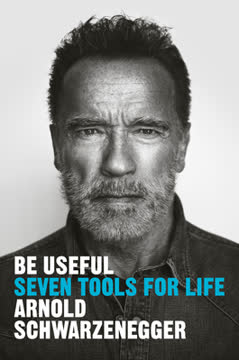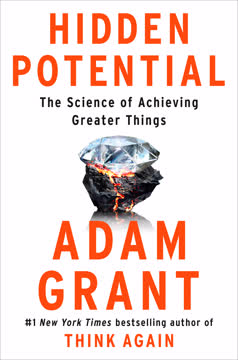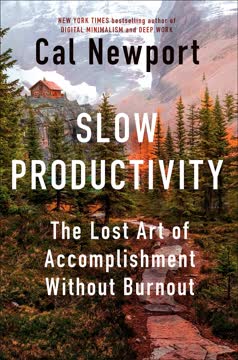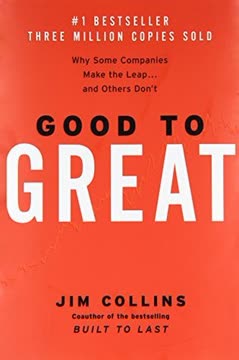Key Takeaways
1. Creativity is a fundamental aspect of being human
Creativity is not a rare ability. It is not difficult to access. Creativity is a fundamental aspect of being human. It's our birthright. And it's for all of us.
Everyone is creative. Creativity isn't limited to traditional arts; it's present in our daily lives. From problem-solving to rearranging furniture, we constantly bring new things into existence. This creative ability is innate and accessible to all.
We are all artists. By perceiving, filtering, and curating our experiences, we actively participate in the ongoing process of creation. Our entire life is a form of self-expression, with each choice we make contributing to our unique work of art.
- Examples of everyday creativity:
- Finding a new route home
- Writing a note to a friend
- Solving a problem at work
- Arranging flowers in a vase
2. The universe functions like a clock: Everything has its time
To everything—There is a season—And a time to every purpose under heaven
Cosmic timetable. The universe operates on its own schedule, with ideas and creative works ripening at predetermined times. As artists, our role is to tune in to these rhythms and translate them into physical form.
Universal unfolding. We are part of an eternal creative process, much like trees blossoming or rivers forging new paths. Our artistic endeavors are our way of participating in this grand cosmic dance.
- Natural cycles in creativity:
- Inspiration striking at unexpected moments
- Ideas finding expression through multiple artists simultaneously
- Artistic movements emerging as cultural waves
3. Awareness and listening are essential to the creative process
Listening is suspending disbelief.
Cultivate presence. Awareness involves noticing what's happening around and inside ourselves without attachment or judgment. This open state allows us to perceive more subtle information and expand our creative possibilities.
Active listening. True listening goes beyond hearing words; it involves being fully present with what's being expressed. By suspending our preconceptions and reactions, we open ourselves to new perspectives and deeper understanding.
- Practices to enhance awareness and listening:
- Meditation and mindfulness exercises
- Sensory exploration walks
- Deep listening to music or natural sounds
- Journaling observations without judgment
4. Beginner's mind: The power of not knowing
There's a great power in not knowing. When faced with a challenging task, we may tell ourselves it's too difficult, it's not worth the effort, it's not the way things are done, it's not likely to work, or it's not likely to work for us.
Embrace ignorance. Approaching tasks with a beginner's mind can remove the barriers of preconceived notions and limitations. This state of not knowing allows for more innovative solutions and unexpected breakthroughs.
Challenge assumptions. By questioning our established beliefs and methods, we open ourselves to new possibilities. This approach can lead to groundbreaking discoveries and novel ways of creating.
- Benefits of beginner's mind:
- Increased creativity and innovation
- Reduced fear of failure
- Greater openness to learning
- Enhanced problem-solving abilities
5. Inspiration and habits: Balancing spontaneity and discipline
Inspiration is out of our control and can prove hard to find. Effort is required and invitations are to be extended. In its absence, we may work on other areas of the project independent of this cosmic transmission.
Cultivate inspiration. While we can't control when inspiration strikes, we can create conditions that invite it. This involves staying open, curious, and attentive to our surroundings and inner experiences.
Develop discipline. Establishing consistent habits and routines provides a framework for creativity to flourish. By showing up regularly to our practice, we increase the chances of encountering inspiration and improve our ability to translate it into tangible work.
- Strategies for balancing inspiration and habits:
- Set regular creative time
- Create an inspiring workspace
- Practice mindfulness to stay open to inspiration
- Develop rituals that signal it's time to create
6. Experimentation and crafting: The journey of creation
If you have just one seed—a very specific vision you want to carry out—that's fine. There is no right way. You might consider the possibility, however, that it could end up being a limitation, because you are no longer taking advantage of all that you have in you.
Embrace exploration. The creative process involves gathering seeds of ideas, experimenting with different possibilities, and crafting the work into its final form. This journey of discovery often leads to unexpected and exciting results.
Balance vision and openness. While having a clear vision can be helpful, remaining open to new possibilities throughout the creative process allows for greater depth and richness in the final work.
- Phases of the creative process:
- Seed gathering
- Experimentation
- Crafting
- Completion
7. Embracing imperfection and vulnerability in art
The imperfections you're tempted to fix might prove to be what make the work great.
Celebrate flaws. Imperfections in art often contribute to its humanity and relatability. By embracing our vulnerabilities and allowing them to show in our work, we create more authentic and powerful art.
Trust the process. Sometimes what we perceive as mistakes or flaws can lead to unexpected breakthroughs or become defining features of the work. Trusting the creative process involves accepting these "imperfections" as potential strengths.
- Ways to embrace imperfection:
- Allow for "happy accidents" in your work
- Resist the urge to over-polish or perfect
- Share works-in-progress to overcome perfectionism
- Celebrate the uniqueness that comes from human touch
8. The artist's responsibility is to the work itself
The artist's only responsibility is to the work itself. There are no other requirements. You're free to create what you will.
Creative freedom. Artists have no obligation to address social issues or conform to external expectations. The primary focus should be on creating authentic work that resonates with the creator.
Trust your intuition. Rather than trying to predict audience reactions or market trends, focus on making work that excites and challenges you. This approach often leads to more genuine and impactful art.
- Principles of artistic integrity:
- Create for yourself first
- Avoid self-censorship based on imagined audience reactions
- Let the work speak for itself
- Prioritize authenticity over popularity
9. Adaptation and growth: The cycle of practice and recovery
Practice gets us part of the way there. Then it takes time for practice to be absorbed into the body. We might call this the recovery phase.
Embrace the cycle. Artistic growth involves both active practice and passive recovery. Recognizing and respecting this cycle can lead to more sustainable and effective improvement.
Allow for integration. After periods of intense practice or creation, allow time for rest and reflection. This recovery phase is when skills are consolidated and new insights emerge.
- Components of the practice-recovery cycle:
- Focused practice or creation
- Rest and reflection
- Unconscious integration
- Renewed energy and inspiration
10. Context shapes content: The power of perspective
The context changes the content.
Consider surroundings. The meaning and impact of a work of art can be significantly influenced by its context, including physical setting, cultural environment, and historical moment.
Play with perspective. By altering the context of a work, artists can explore new meanings and interpretations. This principle can be used intentionally to enhance or subvert the intended message of the art.
- Elements of context to consider:
- Physical environment (gallery, public space, digital platform)
- Cultural and historical moment
- Juxtaposition with other works
- Viewer's personal background and experiences
11. Play and seriousness: The dual nature of making art
Take art seriously without going about it in a serious way.
Balance playfulness and commitment. Creating art involves both the joy of uninhibited experimentation and the dedication to see projects through to completion. Embracing both aspects can lead to more fulfilling and successful artistic practice.
Cultivate childlike wonder. Approach your craft with the curiosity and enthusiasm of a child discovering something new. This mindset can help overcome creative blocks and lead to fresh ideas and approaches.
- Ways to incorporate play into your artistic practice:
- Set aside time for pure experimentation
- Try new techniques or mediums without expectations
- Collaborate with others in playful ways
- Reimagine familiar subjects or themes
Last updated:
FAQ
What's "The Creative Act: A Way of Being" by Rick Rubin about?
- Exploration of Creativity: The book delves into the nature of creativity, emphasizing that it is a fundamental aspect of being human and accessible to everyone.
- Art as a State of Being: Rubin suggests that living as an artist is a way of perceiving the world, paying attention, and refining sensitivity to the subtler notes of life.
- Universal Creative Process: It outlines a universal creative process that involves tuning in, experimenting, crafting, and completing works of art.
- Philosophical and Practical Insights: The book combines philosophical reflections with practical advice on how to engage with the creative process.
Why should I read "The Creative Act: A Way of Being"?
- Inspiration for Creators: It offers inspiration and guidance for anyone looking to engage more deeply with their creative potential.
- Broad Applicability: The insights are applicable not only to traditional artists but to anyone who wants to live more creatively.
- Unique Perspective: Rubin provides a unique perspective on creativity, drawing from his extensive experience in the music industry.
- Practical Advice: The book includes practical exercises and thought experiments to help readers cultivate their creativity.
What are the key takeaways of "The Creative Act: A Way of Being"?
- Everyone is a Creator: Creativity is not limited to artists; it's a fundamental human trait that everyone can access.
- Process Over Product: The focus should be on the creative process itself rather than the end product.
- Embrace Experimentation: Experimentation and play are crucial to discovering new ideas and directions in creative work.
- Trust in Intuition: Trusting one's intuition and being open to the unexpected are vital components of the creative journey.
How does Rick Rubin define creativity in "The Creative Act: A Way of Being"?
- Fundamental Aspect of Being: Rubin defines creativity as a fundamental aspect of being human, accessible to all.
- State of Perception: Creativity is a way of perceiving the world, involving attention and sensitivity to subtle details.
- Universal Process: It involves a universal process of tuning in, experimenting, crafting, and completing.
- Beyond Traditional Arts: Creativity extends beyond traditional arts to include any act of bringing something new into existence.
What practical advice does Rick Rubin offer in "The Creative Act: A Way of Being"?
- Daily Practices: Rubin suggests establishing daily rituals that support creativity, such as mindful breathing or nature walks.
- Experimentation and Play: He encourages experimentation and play as ways to discover new ideas and directions.
- Embrace Mistakes: Mistakes are seen as opportunities for learning and growth, not failures.
- Set Temporary Rules: Imposing temporary rules can help break patterns and lead to innovative solutions.
What is the "Seed Phase" in "The Creative Act: A Way of Being"?
- Initial Stage: The Seed Phase is the initial stage of the creative process where potential starting points are gathered.
- Open Collection: It involves being open to collecting anything of interest without judgment or comparison.
- Nurturing Ideas: The focus is on nurturing these seeds with attention and seeing if they take root.
- Avoid Premature Judgments: Rubin advises against forming conclusions about a seed's value too early in the process.
How does Rick Rubin suggest dealing with self-doubt in "The Creative Act: A Way of Being"?
- Acknowledge Self-Doubt: Rubin acknowledges that self-doubt is a common experience for creators and can serve the art.
- Lower the Stakes: He suggests lowering the stakes by viewing each work as a small step in a larger journey.
- Label and Normalize: Labeling doubts can help normalize them and reduce their power over the creative process.
- Focus on Gratitude: Cultivating gratitude for the opportunity to create can help balance self-doubt.
What role does "Beginner's Mind" play in "The Creative Act: A Way of Being"?
- Childlike Perspective: Beginner's Mind involves approaching tasks with a childlike perspective, free from preconceived notions.
- Openness to Possibilities: It encourages openness to new possibilities and seeing things as if for the first time.
- Innovation Through Ignorance: Rubin suggests that not knowing can lead to innovation and breaking new ground.
- Letting Go of Experience: Letting go of past experiences and knowledge can help access a more creative state.
What are some of the best quotes from "The Creative Act: A Way of Being" and what do they mean?
- "The object isn’t to make art, it’s to be in that wonderful state which makes art inevitable." This quote emphasizes the importance of the creative state of being over the final product.
- "Creativity is not a rare ability. It is not difficult to access. Creativity is a fundamental aspect of being human." Rubin highlights that creativity is inherent in everyone, not just a select few.
- "The universe is only as large as our perception of it. When we cultivate our awareness, we are expanding the universe." This suggests that expanding our awareness can lead to a richer, more creative life.
- "Art is a circulation of energetic ideas. What makes them appear new is that they’re combining differently each time they come back." Rubin describes art as a dynamic process of recombining ideas in new ways.
How does Rick Rubin view the relationship between art and spirituality in "The Creative Act: A Way of Being"?
- Art as a Portal: Rubin views art as a portal to the unseen world, a way to transcend ordinary experience.
- Spiritual Component: He believes that the spiritual component of art provides a sense of wonder and open-mindedness.
- Beyond Reason: The spiritual world offers possibilities beyond the confines of reason and logic.
- Faith in the Process: Rubin emphasizes the importance of faith in the creative process, allowing for the unseen to guide the work.
What is the "Craft Phase" in "The Creative Act: A Way of Being"?
- Building Phase: The Craft Phase is where the artist builds upon the foundation revealed during experimentation.
- Labor of Building: It involves the labor of adding to and refining the work, often seen as less glamorous.
- Balancing Creativity and Labor: While creativity is involved, this phase requires more structured effort and attention to detail.
- Completion and Refinement: The goal is to refine the work to its fullest expression, preparing it for completion.
How does Rick Rubin suggest artists handle external pressures in "The Creative Act: A Way of Being"?
- Tuning Out: Rubin advises artists to tune out external pressures and focus on the pure creative state.
- Recall Original Mindset: Remember the mindset that led to initial success and maintain it throughout the process.
- Avoid Business Concerns: Set aside business concerns and focus on making something you love.
- Inner Focus: Keep the focus on creativity and work in a sacred space, free from outside influences.
Review Summary
The Creative Act: A Way of Being receives mixed reviews. Some praise it as profound and inspirational, offering universal truths about creativity. Others criticize it as superficial, filled with obvious advice and pseudo-philosophical musings. Positive reviewers appreciate Rubin's Buddhist-inspired approach and find the book meditative and rejuvenating. Critics argue it lacks substance and practical advice, comparing it to fortune cookie wisdom. The audiobook narrated by Rubin receives both praise and criticism for its meditative quality. Overall, the book seems to resonate more with those open to spiritual approaches to creativity.
Similar Books









Download PDF
Download EPUB
.epub digital book format is ideal for reading ebooks on phones, tablets, and e-readers.




